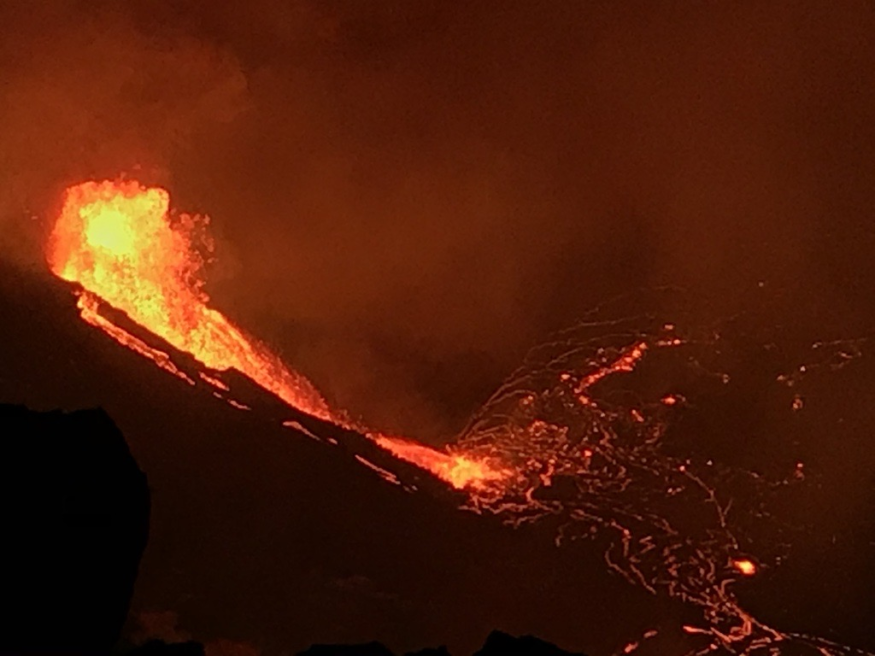Hawaii's Kilauea volcano erupted on Sunday, prompting Hawaii county Civil Defense Agency to warn residents to stay indoors.
The eruption occurred in Halema'uma'u crater, where a new lava flow and a pool of water interacted inside the crater leading to a short-lived but fairly vigorous eruption.
A steam cloud shot up at about 30,000 feet into the atmosphere as all the water evaporated out of the lake.
Advisory warning of fallen ash

An advisory warning from the National Weather Service in Honolulu was raised of the fallen ash from the volcano.
" Stay indoors to avoid exposure to the ash," the agency said.
The ash can cause eye and respiratory irritation, and the eruption was easing and a "low-level steam cloud" was lingering in the area.
The USGS officials said that there were reports of lava fountains shouting at about 50 meters into the sky, and is feeding a lake within the crater that holds water.
READ: Mount Semeru Eruption Forces Evacuation In Java, Indonesia
The Hawaiian Volcano Observatory's spokesperson David Phillips said that the agency is closely monitoring the situation and assured residents that they will sending out further notifications on Kilauea and other volcanoes should they observe changes.
A magnitude 4.4 earthquake struck an hour after the volcanoes erupted. No significant damage to buildings and structures was expected.
At least seven other earthquakes ranging from 2,5 to 2.7 magnitude happened in the past few hours.
The Observatory also said that trade winds could move toward southeast placing communities in the path of the ash fall. Among those communities are the Kau District in Wood Valley, several areas which has dense populations like Pahala, Naalehu and Ocean View.
The lava flowed into the water lake of the summit, increasing the water temperature and replacing it with Lava lake. The lava was then contained in the
Halema'uma'u crater.
READ ALSO: Indonesia: Mount Semeru Erupted Two Days After Ili Lewotolok's Blast
History of Kilauea's eruption
Kīlauea is among the world's most active volcano and may even be the most active in the world.
The caldera had continuous activities in the 19th and the early part of the 20th century,
The active volcano has erupted 34 times since 1952.
In 1983 to 2018, Kīlauea had nearly continuous activities along the volcano's East Rift Zone.
USGS reports that a vent within Halema'uma'u hosted an active lava pond and vigorous plume for a decade from 2008 towards 2018. By 2018, the 10 year continuous activity of the volcano ended with a draining of the lava lake and eventually, eruption from Kīlauea's lower East Rift Zone.
It last erupted in 2018, which destroyed more than 700 homes and spewing lava that flowed for over four months, leaving deposits up to 24 meters in some areas.
Kīlauea would appear only like a bulge on the southeastern flank os Muana Loa and for many years, it was thought to be a satellite of its giant neighbor.
Later, it was discovered that Kilauea has its own magma-plumbing system which runs 60 kilometer deep in the earth.
READ NEXT: Indonesia's Mount Ili Lewotolok Erupts, Thousands of People Evacuated
Check out more news and information on Volcanoes in Nature World News.
© 2025 NatureWorldNews.com All rights reserved. Do not reproduce without permission.





